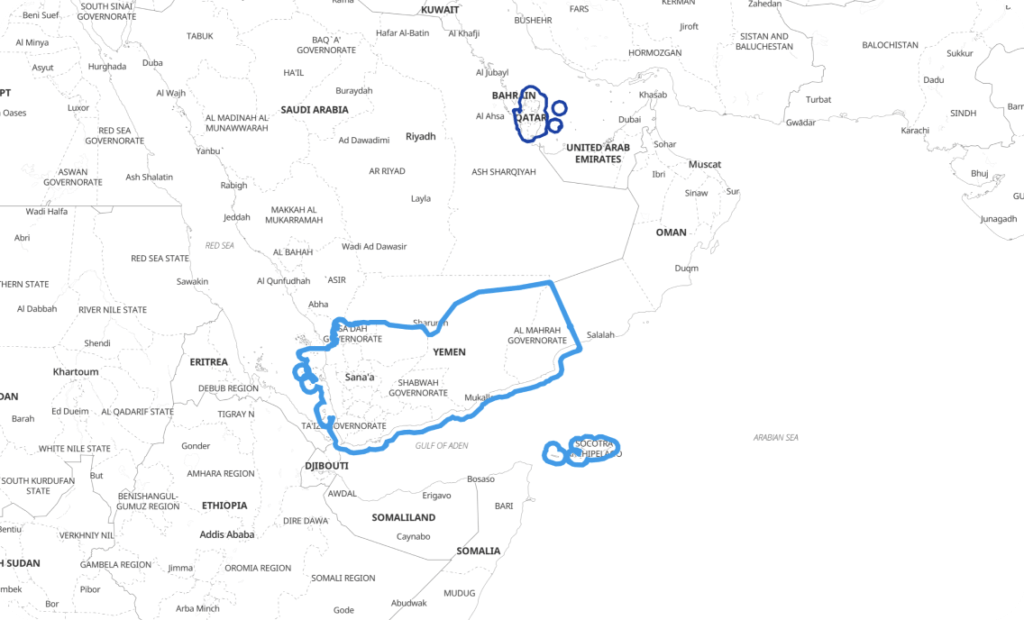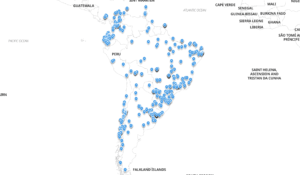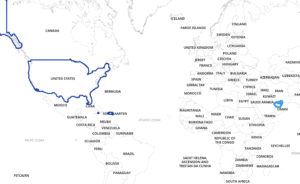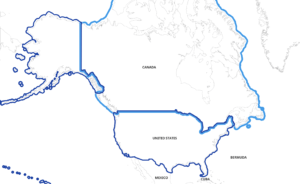Insights generated using Kontur Atlas
We gather data relevant to your area of interest
Select data showing the most significant changes compared to global averages or other specified regions
We provide AI-driven insights based on this data
Yemen & Qatar AI comparison
🌞🔥 High Heat Stress: While Yemen has almost negligible days above 32°C wet-bulb (+2°C scenario) and (+1°C scenario), Qatar has a few days, indicating slightly higher heat stress. This suggests Yemen offers a marginally better environment in terms of extreme heat stress.
📊 Quick Naturalization: Yemen requires 5.01 years for naturalization, much shorter than Qatar’s 24.93 years. This can be attractive for potential immigrants looking for quicker citizenship processes in Yemen.
🛡️ Low Safety: Yemen has a Global Peace Index score of 0.16, significantly worse than Qatar’s 2.02 and the global average of 1.18. This indicates a critical need for improved security and stability in Yemen.
☀️💡 Suboptimal for Solar Farms: The suitability estimation for solar farms in Yemen is 0.09, lower than Qatar’s 0.72. Yemen may not be the ideal location for large-scale solar farm projects due to lower suitability scores.
💰 Economic Disparity: GDP per capita in Yemen is $645.09 compared to Qatar’s $54,126.57, indicating a massive economic gap. Economic development in Yemen appears to be far behind Qatar.
🌜 Hot Nights: Yemen experiences 58.72 nights above 25°C in a +1°C scenario compared to Qatar’s 148.09 nights, demonstrating a smaller exposure to hot nights but still higher than the global average.
🏭👫 Power Infrastructure: Yemen has an average distance of 261,588.22 meters to the nearest power substation, compared to Qatar’s 15,153.96 meters. This highlights potential issues in power distribution infrastructure in Yemen.
🛣️ Road Density: Yemen has 0.21 km of road per sq km, much lower than Qatar’s 3.04 km. This means Yemen has less developed road infrastructure, which might impact transport and logistics.
🌌 Nighttime Activities: Nighttime lights intensity in Yemen is 0.11 watts per square centimeter per steradian, much lower than Qatar’s 15.94. This could be an indicator of less urbanization and fewer nighttime activities.
Key Takeaways
- Economic and infrastructural gaps are major challenges in Yemen.
- Safety and security are significantly lower, posing risks for residents and travelers.
- While Yemen has a lower occurrence of extreme heat stress and hot nights, its suitability for solar energy is comparatively low.
- Naturalization is faster in Yemen, which could be a potential advantage for prospective residents.
Careful consideration should be given to these factors when planning visits or relocating from Qatar to Yemen. 🌍





